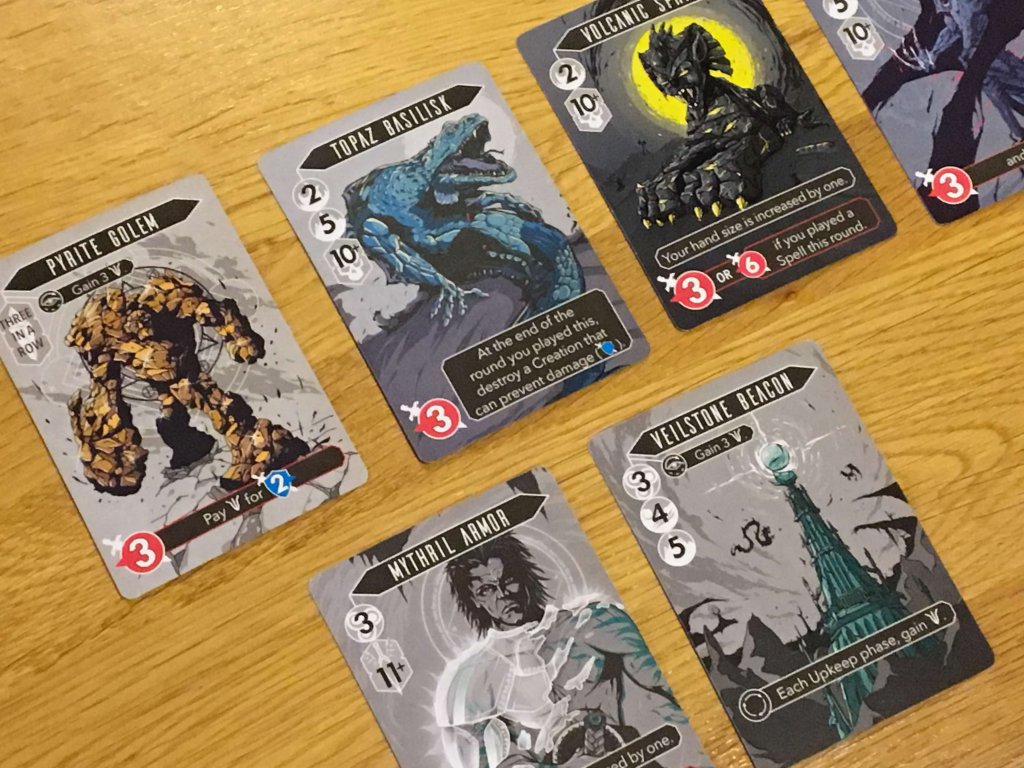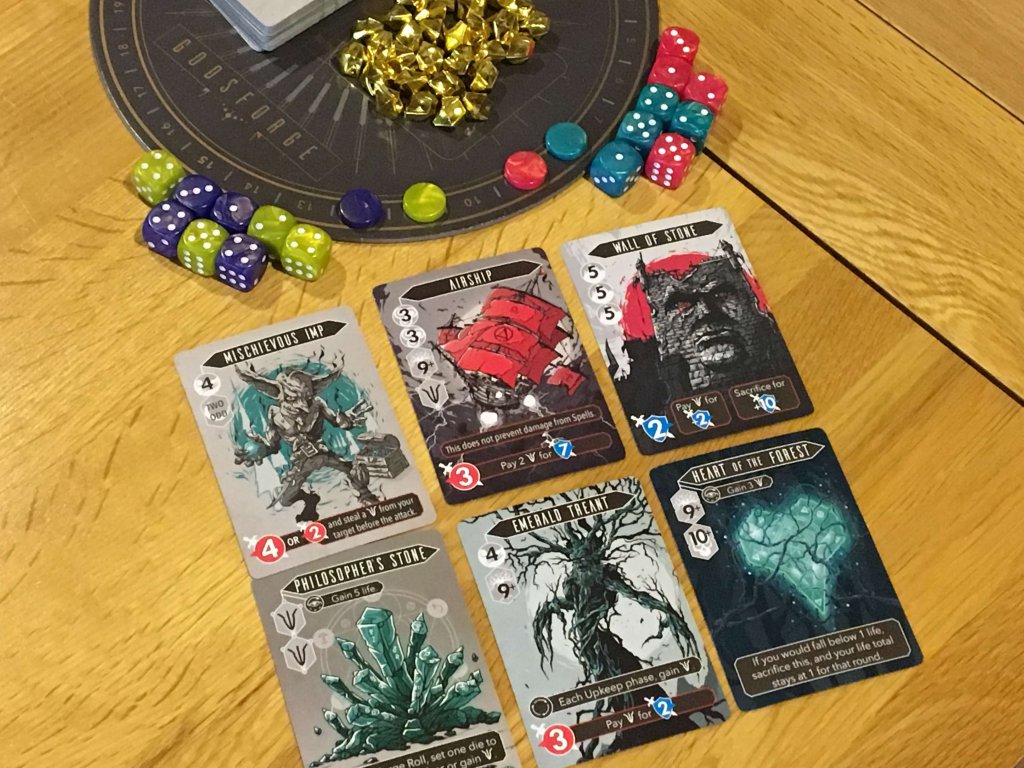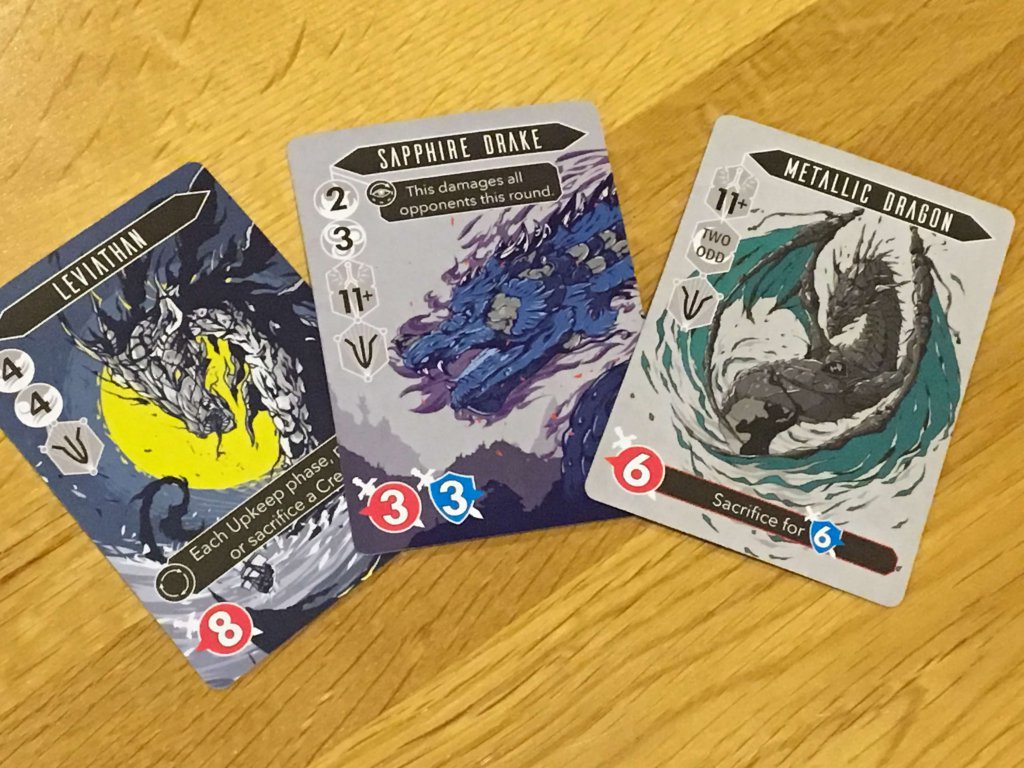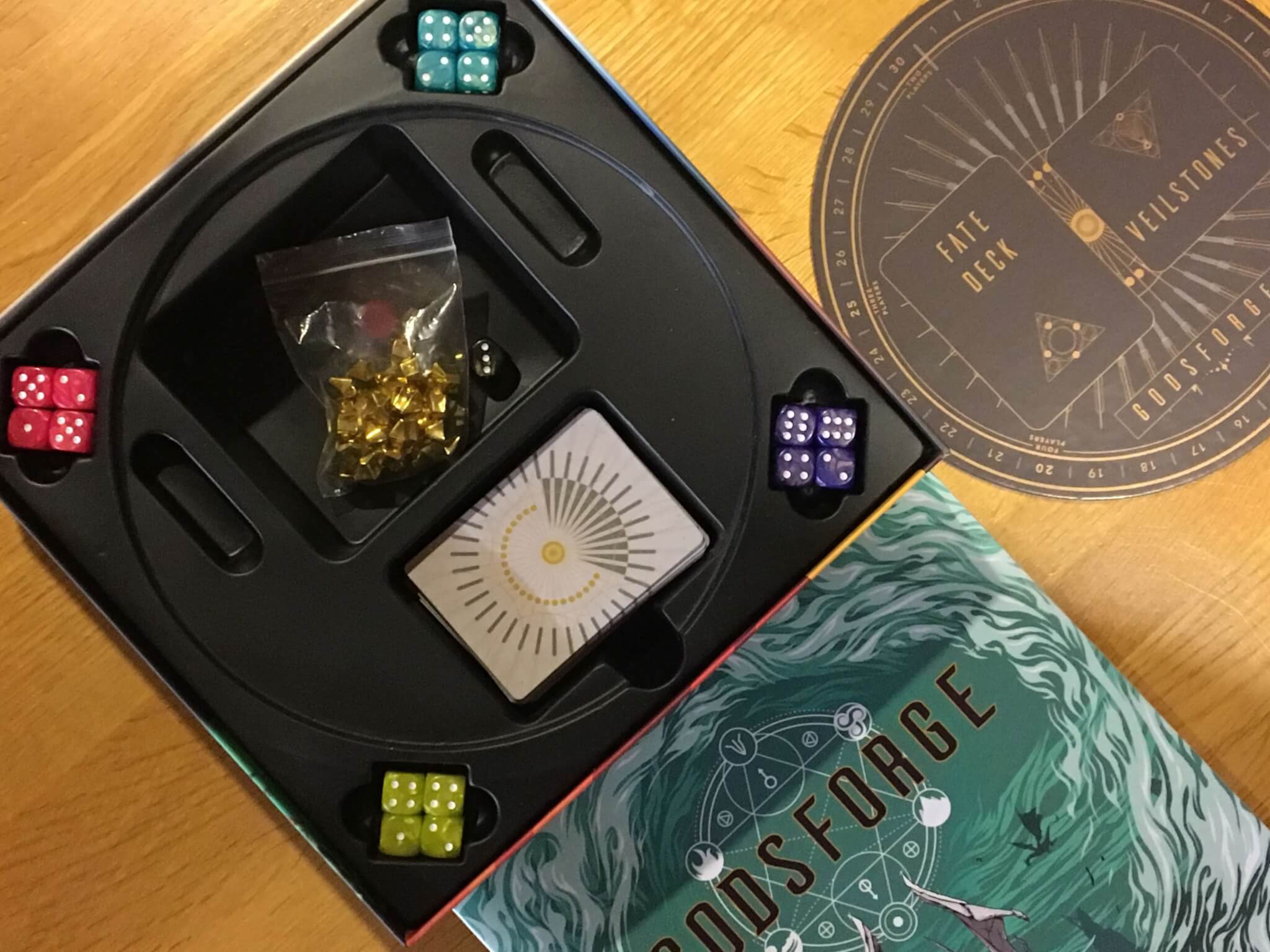Godsforge — Just like magic
If you’re a fan of Magic: The Gathering and other card battling systems, then you’ll almost certainly want to check out Godsforge from Atlas Games. This attractive boxed game invites two to four players to join an endless war for the most powerful resource ever known — Etherium.
Right from the outset, Godsforge sets out its stall with clear intentions. This is a game that has been designed to offer a boxed game experience for up to four players, with clear space in the box (and among the components) for future expansion. There’s simply no other explanation — apart from the age old argument of grabbing the most attention — for such a small number of cards to be placed inside such a large box.
That said, I can understand the desire to provide players with extra space, as once I’d had a few rounds of Godforge, I was keen to keep playing. Not only that, but I also wanted to experience more of what this unique looking world had to offer. Whilst there’s no doubt that Diego Rodriguez’s art has a polarising effect on players (with some disliking its highly individual, almost monochrome nature) I think it looks incredible, making Godsforge likely to be among the most striking games of 2019.

In gameplay terms, the feeling of card combat games like Magic: The Gathering is invasive, but where most games tackle MTG’s luck-of-the-draw based mana system by introducing cards that can either be played or used as a resource, Godsforge features a dice rolling sub-game. This neat system introduces its own forms of luck, but there are enough options within the shared deck that its rare to have a turn where you’re unable to advance your board position.
At a more detailed level, each player begins the game with a hand of four cards — including both Creations and Spells. Creations act like permanently summoned assets; including buildings, monsters, artifacts and totems, each offering a benefit to attack, defense, veilstone production or something else. Spells, on the other hand, act as instantaneous effects that can deal damage, heal the casting player or otherwise affect the board.
The players are limited to playing a single card each turn and on almost all occasions, doing so will use at least two or three of their rolled dice. Dice landing on a one can be used as any other number, whilst a six, if unused when playing cards, can instead be spent to draw a veilstone. On that note, veilstone can be used to increase or decrease the value of a dice by one, whilst no matter what is rolled, the player can choose to reroll up to two dice (either one die twice or up to two dice once each.)
With all of this in mind, players will almost always be able to match the requirements of one or more of the cards in their hand. Requirements are all detailed in the manual under elaborate and thematic descriptions that make them sound like precious stones. Mathematically, these can all be boiled down to something like “spend dice that total more than ten” or “spend three equal dice.”
With the requirement met, the player can then place the card, if it’s a Creation, onto the board permanently. Sometimes, a Creation will come with an entry ability such as dealing damage or obtaining a veilstone for its caster. It will then likely have an ongoing effect that either happens passively each turn or, more likely, can provide a benefit to the attack or defence of the player who cast it. There are some more complex effects, but I found that no matter how complicated it got, each card clearly explained itself and there’s no need to refer to the manual to clarify such matters.
In addition to the very interesting dice powered casting system, Godsforge also has a unique approach to combat. Combat is mandatory each round and the players don’t choose who or when to attack. Instead, the full attack value of your Creations is counted in each Attack Step, then it is flung towards the opponent on your left. This attack value is compared to the defenders defence (and both attacker and defender may sometimes spend veilstones to modify the outcome) and the balance, if there is one, is deducted from the defending players life total.
Bearing in mind that in a two player game, this results in head to head combat where each player compares their attack and defence against each other. In a three or four player game, players will be attacking a different player to the one they defend against, so there’s some interesting tactical depth to consider. It certainly pays to keep an eye on what the players on either side of you are focussing on.
Another cool mechanic basically ensures that player elimination is kept to a minimum. Once the first player is defeated (by having their life reduced to zero) then each turn, all remaining players will take seven additional damage, thematically representing some kind of instability in the immortal realm. This means that no matter what happens, the players are on a death clock that will usually close out the game in two or three more turns at the very most.
As you might imagine, this unique way of handling confrontation is actually a little bit detached, but it works very well for players who want to focus purely on the strategic planning elements of outthinking and outmaneuvering not one, but two opponents (and ultimately three, in a four player game.) In a two player game, Godsforge feels completely different, taking on a much more traditional head to head combat feel, albeit without any of the time-consuming decisions associated with which creatures to hold back with.
Godsforge undoubtedly plays best with four players, when this need to defend one flank whilst also planning your own assault on another is at its most complex. That doesn’t mean the two player version is a slouch though, although I did find that games commonly end with both players dying in the same round (which uses how much damage they suffered as the tiebreaker.)
Aside from that minor point, I think my only criticism of Godsforge is that even if future expansions are planned, I think the box contains perhaps twenty or thirty percent fewer cards than it should. If you play four or five games back to back (which I did want to do) you’ll see slightly more repetition than I think I’d like, although with that said, being used to the cards and what they do is no bad thing in itself.
There’s no other card combat game quite like Godsforge, both in terms of how it looks and how it plays. The dice rolling system, with ones and sixes offering slightly different variations on the norm and no real power level difference between rolls of any value makes the game feel fair, whilst the different experiences at various player counts adds a lot of value. The beautiful, unique artwork really adds icing to an already delicious cake. Godsforge is well worth a closer look.
Godsforge is available for purchase right now, can find out more about it on the publisher’s website.
Love board games? Check out our list of the top board games we’ve reviewed.





Comments are closed.